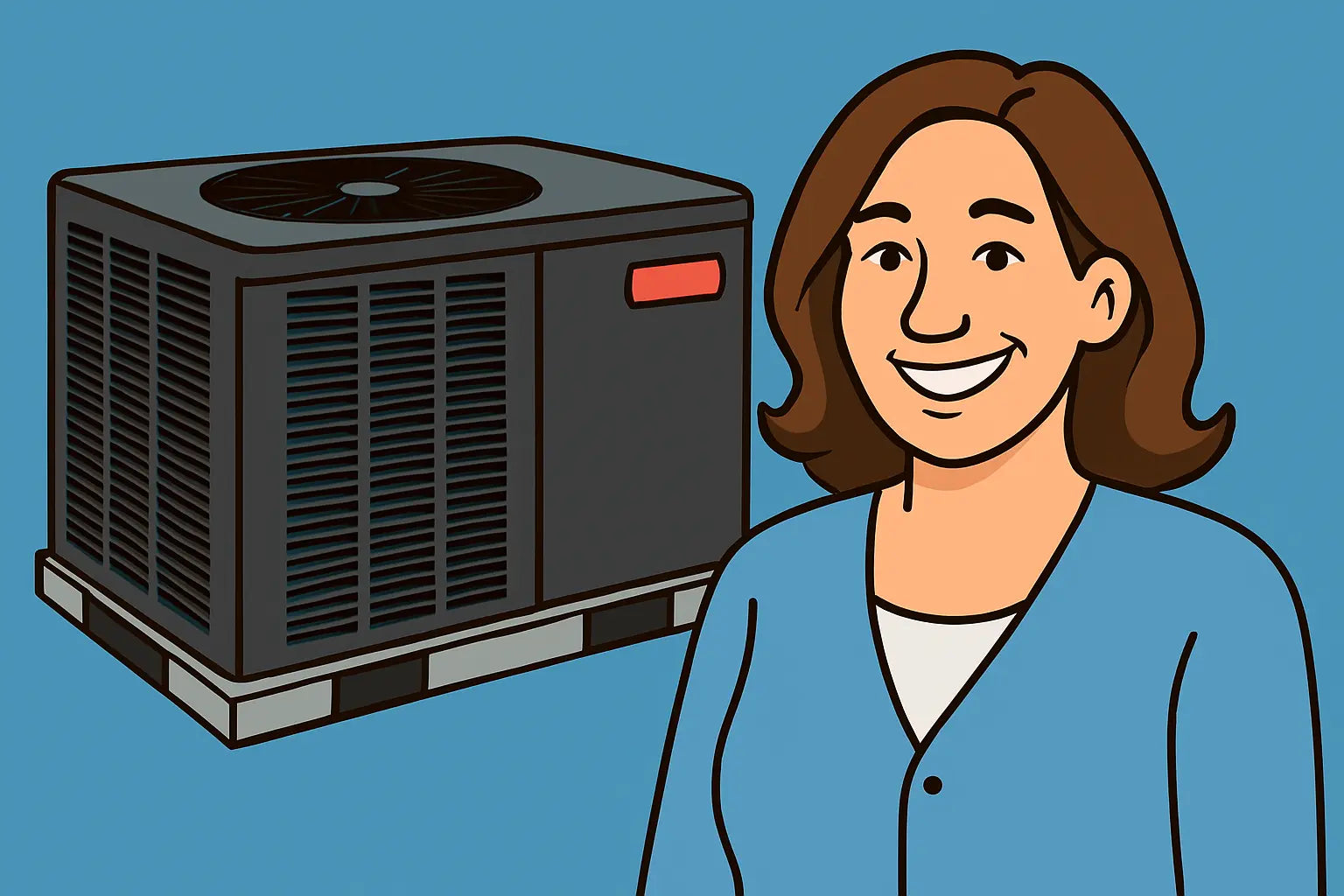Hey there—it’s Samantha
You know me, I’m all about demystifying the world of HVAC so regular folks like us can make informed, confident choices. The Goodman GPCH33631 is one of those sleek, space-saving horizontal AC units that’s perfect for certain setups, but installing and troubleshooting it can feel intimidating if you’ve never worked with one before. Don’t worry—by the time we’re done, you’ll be feeling like an HVAC pro (without the toolbelt stress).
1. Meet the GPCH33631
This is a 3-ton, horizontal discharge packaged AC that runs on R-32 refrigerant. Translation: it’s a solid choice for mid-sized homes, offers decent efficiency, and uses a refrigerant that’s a bit more future-proof compared to older options. The cabinet is tough, the motor is built to last, and the airflow is designed for spaces where a vertical unit just won’t fit.
It also comes with a 10-year parts warranty—just remember you need to register it within 60 days of installation unless you live in certain states where that’s waived.
2. Pre-Installation Checklist
If you’re about to put this unit in, preparation is everything. Here’s what I always recommend:
-
Verify the unit size with a proper load calculation. Installing an oversized or undersized AC can lead to higher bills and less comfort. The EPA’s ENERGY STAR installation guide explains why correct sizing is a game-changer.
-
Check that your ductwork is clean, sealed, and aligned for horizontal airflow.
-
Ensure your electrical setup has the correct breaker size and dedicated circuit.
-
Prepare a level mounting pad to keep the unit stable and ensure proper drainage.
-
Get your safety gear ready—gloves, eye protection, and an insulated screwdriver are minimum requirements.
3. Step-by-Step Installation
Installing a horizontal packaged unit is a bit different from traditional split systems, but here’s a homeowner-friendly breakdown:
-
Place the unit on a sturdy, level pad away from debris and vegetation.
-
Attach and seal ductwork to prevent air leaks.
-
Connect the electrical wiring per manufacturer specs and local codes.
-
Route the condensate drain so it flows freely to a safe disposal area.
-
Confirm the refrigerant charge is correct for R-32. If you’re unsure, follow professional guidelines like those in ARCtick’s R-32 technician guide.
-
Run the system, check airflow, and verify temperature differences between return and supply air.
-
Register your unit for warranty coverage.
4. R-32 Refrigerant Considerations
R-32 operates at pressures similar to R-410A but is classified as an A2L refrigerant—meaning it’s mildly flammable. While it’s safe in residential applications, it does require certain handling precautions:
-
Use leak detectors rated for R-32, not older torch-style sniffers.
-
Ensure adequate ventilation during servicing.
-
Replace old refrigerant lines if they aren’t rated for R-32’s pressure and performance.
5. Troubleshooting Like a Pro
Even well-installed units can hiccup. Here’s a quick guide to common problems:
-
Unit not cooling enough: Check for dirty coils or low refrigerant. The ENERGY STAR maintenance checklist covers the basics you can handle yourself.
-
Weak airflow: Inspect the air filter, blower motor, and ductwork for obstructions.
-
Odd noises: Rattles often mean loose panels, while hissing could indicate a refrigerant leak.
-
Water pooling: This points to a clogged condensate line—flush it with a mild vinegar solution.
-
System cycling too often: Could be a thermostat issue or refrigerant imbalance.
If these fixes don’t resolve the problem, it’s time to call in a certified technician who’s familiar with R-32 systems.
6. Seasonal Maintenance
A little TLC goes a long way toward keeping your Goodman running smoothly. My seasonal checklist:
-
Change filters every 1–3 months depending on use and indoor air quality.
-
Clean the outdoor coil annually—Goodman’s official maintenance tips are a great reference.
-
Inspect electrical connections for corrosion or looseness.
-
Check refrigerant pressures in spring before peak cooling season.
-
Keep vegetation trimmed at least 2 feet around the unit for proper airflow.
7. Efficiency and Energy Savings
Horizontal units can be just as efficient as vertical models when installed correctly. To really maximize performance:
-
Seal and insulate ducts in unconditioned spaces.
-
Install a programmable or smart thermostat for automated temperature control—Consumer Reports’ smart thermostat buying guide is a solid place to start.
-
Add attic insulation to recommended R-values to reduce load on your AC.
-
Schedule professional tune-ups twice a year.
8. Warranty Reminders
The GPCH33631’s warranty can save you a lot of money if something fails unexpectedly, but you need to play by the rules: register on time, keep proof of maintenance, and use authorized parts. Skipping these steps could mean paying out of pocket for repairs you thought would be covered.
Samantha’s Send-Off
There you have it—your no-nonsense, step-by-step guide to installing and troubleshooting the Goodman GPCH33631. From my experience, most problems people run into with their AC units boil down to two things: improper installation and skipped maintenance. If you nail those two, you’ll be rewarded with years of quiet, efficient cooling.
And if you’re still in the shopping or upgrade phase, you can check out the Goodman Horizontal Air Conditioner 3-Ton Cooling Power R-32 Model GPCH33631 to see full specs, pricing, and availability straight from the source.
Worried about installing this system incorrectly? Visit my guide: Goodman GPCH33631 Installation Mistakes That Could Cost You Cooling Power.
Stay smart, stay cool, and remember—treat your AC right, and it will have your back when the summer heat cranks up.
— Samantha, Home Comfort Advisor







